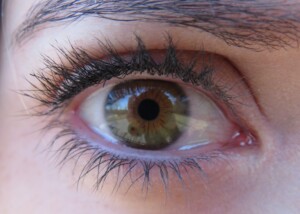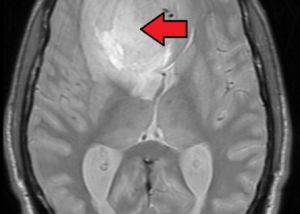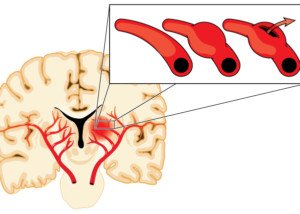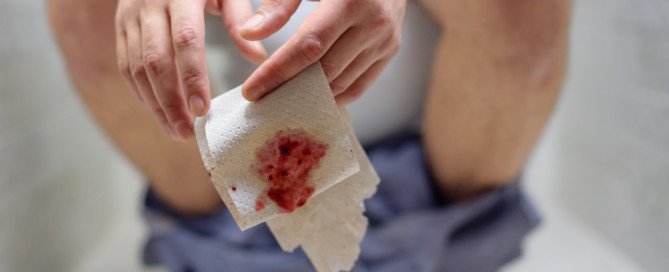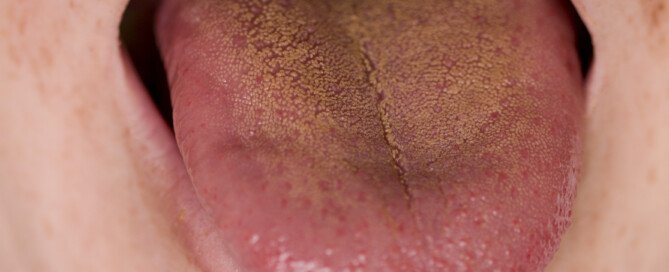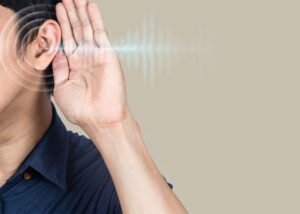Is There a Way to Prevent Very Watery Eyes when Laughing?

Do you hate laughing around people because it always makes your eyes water?
“I laughed so hard that tears rolled down my cheeks” is a common statement, but for some people, even a little laughing causes watery eyes – way too watery for their comfort, and enough for others to notice and comment on. (more…)
Constant Headache with Pressure Behind Eye: Neuro Causes

A constant headache plus ongoing pressure behind an eye would be an emergency situation under certain circumstances, while under others would be less serious. (more…)
Can One Pupil More Dilated Mean a Brain Tumor?

A brain tumor can cause one pupil to be bigger or more dilated than the other.
But so can less serious conditions including totally benign. (more…)
Food Feels Like Sharp Glass Pieces Going Down Esophagus: Why?
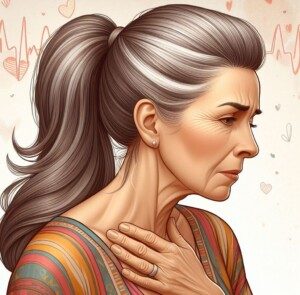
Something is definitely wrong if food feels like pieces of glass when you swallow.
Unless you’re swallowing pistachio shells, there is no normal reason for any food – even ground-up hard candy – to feel sharp or like glass fragments when you swallow. (more…)
IBS Waking You Up At Night: Causes and Solutions

A GI doctor has some very surprising news for sufferers of IBS who keep getting wakened overnight by cramps and diarrhea.
If you’ve been diagnosed with irritable bowel syndrome, you already know what this does to your day to day life.
You may have the diarrhea kind (IBS-D) or the constipation type (IBS-C), or it may jump back and forth.
The cramping and diarrhea can be so bad for many people with IBS that they will withhold eating all day at work just to minimize the problems.
But What About Nighttime Abdominal Pain and Diarrhea?
“Generally speaking, IBS doesn’t give nighttime symptoms,” says Dr. Caterina Oneto, MD, a gastroenterologist and internal medicine specialist with NYU Langone Health.
Dr. Oneto explains, “In other words, patients with IBS don’t have abdominal pain or diarrhea that wake them up at night.”
You’ve Been Misdiagnosed or Have a Second Condition that Was Never Diagnosed
Dr. Oneto says that if you’ve been getting wakened overnight on a chronic basis (which would likely rule out food poisoning) by cramping that’s relieved after you have diarrhea, “see your doctor because other conditions should be ruled out.
“Don’t just assume ‘it’s just IBS.’ Abdominal pain, for example, can be caused by several conditions, like gastroesophageal reflux or ulcers of the stomach or small intestine.
“Diarrhea can be caused by gastrointestinal infections, celiac disease and inflammatory bowel disease, among others.”
Likely Scenarios
You may actually have IBS. However, this does not make you immune to an inflammatory bowel disease – of which IBS is not.
There is an uncommon inflammatory bowel disease that is well-known for causing middle of the night lower abdominal pain that’s relieved with diarrhea: microscopic colitis.
IBS should be a diagnosis of exclusion. There are no tests that show irritable bowel syndrome.
But when all other tests for conditions that produce the symptoms of IBS come up negative, then a diagnosis of IBS is made.
The diagnosis becomes even stronger when, over time, the patient does not develop additional symptoms that can point to a misdiagnosis of a more serious disease – symptoms such as bloody stools, unexplained weight loss and vomiting.
But somewhere along the way, this patient with IBS developed microscopic colitis, and it is THAT that is waking him or her up overnight.
The pain preceding the diarrhea can be severe, and the diarrhea is often explosive and watery, splattering the sides of the toilet bowl as it gushes out.
The patient may not know the diarrhea is coming until literally moments before they feel it’s going to come.
Another scenario is that the patient never had IBS, but had microscopic colitis all along and was misdiagnosed.
The daytime symptoms of IBS and MC significantly overlap, but MC is infamous for nocturnal diarrhea.
If you were diagnosed with IBS but never had a colonoscopy, and you waken at least once a night on most nights (or in the wee hours of the morning) to have diarrhea, you’d better get a colonoscopy.
A colonoscopy is the only way to diagnose microscopic colitis as well as two other IBD’s: ulcerative colitis and Crohn’s disease.
Celiac disease is diagnosed with a blood test (did you have the celiac sprue test?).
Overnight diarrhea, especially watery, does NOT point to colon cancer.
 Dr. Oneto’s expertise includes colonoscopy, endoscopy and liver and pancreatic disease, and her special interests include colon cancer screening and prevention, and management of GERD, IBS and obesity.
Dr. Oneto’s expertise includes colonoscopy, endoscopy and liver and pancreatic disease, and her special interests include colon cancer screening and prevention, and management of GERD, IBS and obesity.
 Lorra Garrick has been covering medical, fitness and cybersecurity topics for many years, having written thousands of articles for print magazines and websites, including as a ghostwriter. She’s also a former ACE-certified personal trainer.
Lorra Garrick has been covering medical, fitness and cybersecurity topics for many years, having written thousands of articles for print magazines and websites, including as a ghostwriter. She’s also a former ACE-certified personal trainer.
.
Top image: ©Lorra Garrick
What Can Blood on Toilet Paper but Not on Stool Mean?

It’s one frightening experience: You wipe yourself after pooping, glance at the toilet paper and see red or pink smeared in with the poop stain.
Your heart races; your breathing stops; your eyes don’t blink as your mouth hangs open. You wonder if it’s colon cancer. (more…)
How Harmful Is Two Weeks with No Bowel Movement in Adults?

Don’t you just hate it when you’re looking forward to a delicious meal and you realize you can’t taste or smell due to your cold?
And no matter how hard you blow your nose
Can Gerd Cause a Yellow Orange Coated Tongue?
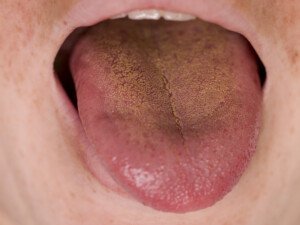
Have you opened your mouth lately to discover, to your alarm, a yellow orange color to your tongue? Could GERD be the cause?
After all, you haven’t been sucking on any lemon or orange popsicles or candy, so what can this strange symptom possibly be from? (more…)
Can GERD Block a Eustachian Tube and Cause Ear Problems?

Many things, including a brain tumor and sinus cancer, can cause ear pain.
And believe it or not, GERD can block a Eustachian tube.
What exactly is the Eustachian tube?
It’s a canal-like structure that connects one’s middle ear to the nasopharynx.
The nasopharynx is the upper throat and back of the sinus cavity.
The Eustachian tube controls pressure within your middle ear, making the pressure equal to that outside of your body.
And acid reflux can actually get up there.
“GERD can cause a blocked Eustachian tube, including symptoms of a ‘clogged ear,’ as well as possible middle ear infections,” says Dr. Edward Brettholz, MD, with with Vanguard Gastroenterology in NYC, NY.
Dr. Brettholz explains, “If stomach acid refluxes into the back of the throat, it can cause inflammation of the Eustachian tube opening and blockage of that area.
“In addition, the acid can sometimes be found in the tube itself, causing inflammation and swelling.”
If you’re experiencing ear pain, stuffiness, a blocked sensation or some other kind of discomfort, and there’s also new-onset hearing loss or worsening of hearing, and/or tinnitus (a constant hissing or buzzing noise in an ear), you should see an ear, nose and throat specialist. GERD does not affect hearing or cause tinnitus.
If ear symptoms are accompanied by nosebleeds and/or any of the following: a lump under the inner corner of an eye, thick discharge from the eye, excessive tearing in one eye or a reduced sense of smell, this strongly points away from GERD as a possible cause – and instead suggests a problem originating in a sinus cavity or the tear drainage system.
A brain tumor called an acoustic neuroma can cause a sensation of a clogged ear and possibly ear pain.
Often it causes tinnitus and hearing loss, but not always, especially if it’s very small.
The bottom line is that if you have persistent discomfort with one ear, do not ignore this.
It potentially has MANY causes, and the likelihood that it’s cancer in a sinus cavity is very exceedingly low.
 Dr. Brettholz lectures extensively and is involved in cutting edge research trials. He has special interests and expertise in liver diseases, GERD, inflammatory bowel disease and hemorrhoid treatment. Dr. Brettholz lectures extensively and is involved in cutting-edge research trials.
Dr. Brettholz lectures extensively and is involved in cutting edge research trials. He has special interests and expertise in liver diseases, GERD, inflammatory bowel disease and hemorrhoid treatment. Dr. Brettholz lectures extensively and is involved in cutting-edge research trials.
 Lorra Garrick has been covering medical, fitness and cybersecurity topics for many years, having written thousands of articles for print magazines and websites, including as a ghostwriter. She’s also a former ACE-certified personal trainer.
Lorra Garrick has been covering medical, fitness and cybersecurity topics for many years, having written thousands of articles for print magazines and websites, including as a ghostwriter. She’s also a former ACE-certified personal trainer.
Causes of BOTH Constant Loud Stomach Noises & Bad Cramping

The symptom pair of constant loud stomach noises with severe cramping can be caused by one of multiple different diseases, including a very serious one.
The thing about loud or noisy stomach sounds is that usually they are caused by hunger or gas from certain foods. (more…)




